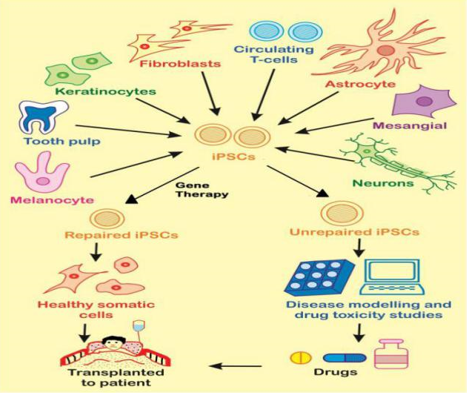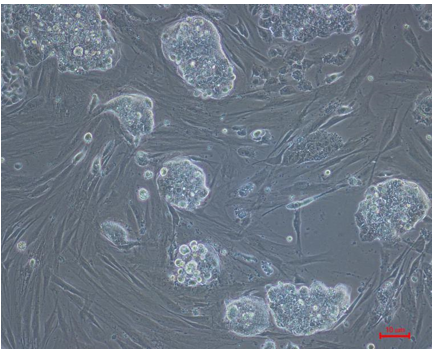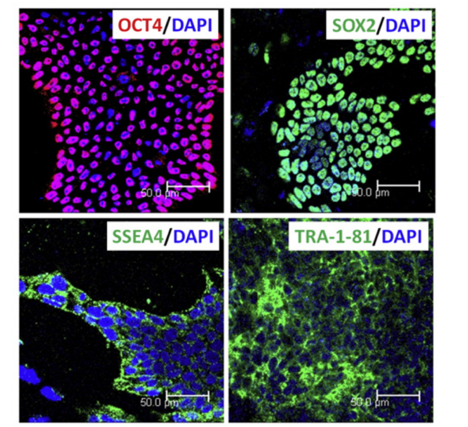- You are here: Home
- Services
- Stem Cell Research
- iPSC Generation
- Somatic Cell Reprogramming
Services
-
Cell Services
- Cell Line Authentication
- Cell Surface Marker Validation Service
-
Cell Line Testing and Assays
- Toxicology Assay
- Drug-Resistant Cell Models
- Cell Viability Assays
- Cell Proliferation Assays
- Cell Migration Assays
- Soft Agar Colony Formation Assay Service
- SRB Assay
- Cell Apoptosis Assays
- Cell Cycle Assays
- Cell Angiogenesis Assays
- DNA/RNA Extraction
- Custom Cell & Tissue Lysate Service
- Cellular Phosphorylation Assays
- Stability Testing
- Sterility Testing
- Endotoxin Detection and Removal
- Phagocytosis Assays
- Cell-Based Screening and Profiling Services
- 3D-Based Services
- Custom Cell Services
- Cell-based LNP Evaluation
-
Stem Cell Research
- iPSC Generation
- iPSC Characterization
-
iPSC Differentiation
- Neural Stem Cells Differentiation Service from iPSC
- Astrocyte Differentiation Service from iPSC
- Retinal Pigment Epithelium (RPE) Differentiation Service from iPSC
- Cardiomyocyte Differentiation Service from iPSC
- T Cell, NK Cell Differentiation Service from iPSC
- Hepatocyte Differentiation Service from iPSC
- Beta Cell Differentiation Service from iPSC
- Brain Organoid Differentiation Service from iPSC
- Cardiac Organoid Differentiation Service from iPSC
- Kidney Organoid Differentiation Service from iPSC
- GABAnergic Neuron Differentiation Service from iPSC
- Undifferentiated iPSC Detection
- iPSC Gene Editing
- iPSC Expanding Service
- MSC Services
- Stem Cell Assay Development and Screening
- Cell Immortalization
-
ISH/FISH Services
- In Situ Hybridization (ISH) & RNAscope Service
- Fluorescent In Situ Hybridization
- FISH Probe Design, Synthesis and Testing Service
-
FISH Applications
- Multicolor FISH (M-FISH) Analysis
- Chromosome Analysis of ES and iPS Cells
- RNA FISH in Plant Service
- Mouse Model and PDX Analysis (FISH)
- Cell Transplantation Analysis (FISH)
- In Situ Detection of CAR-T Cells & Oncolytic Viruses
- CAR-T/CAR-NK Target Assessment Service (ISH)
- ImmunoFISH Analysis (FISH+IHC)
- Splice Variant Analysis (FISH)
- Telomere Length Analysis (Q-FISH)
- Telomere Length Analysis (qPCR assay)
- FISH Analysis of Microorganisms
- Neoplasms FISH Analysis
- CARD-FISH for Environmental Microorganisms (FISH)
- FISH Quality Control Services
- QuantiGene Plex Assay
- Circulating Tumor Cell (CTC) FISH
- mtRNA Analysis (FISH)
- In Situ Detection of Chemokines/Cytokines
- In Situ Detection of Virus
- Transgene Mapping (FISH)
- Transgene Mapping (Locus Amplification & Sequencing)
- Stable Cell Line Genetic Stability Testing
- Genetic Stability Testing (Locus Amplification & Sequencing + ddPCR)
- Clonality Analysis Service (FISH)
- Karyotyping (G-banded) Service
- Animal Chromosome Analysis (G-banded) Service
- I-FISH Service
- AAV Biodistribution Analysis (RNA ISH)
- Molecular Karyotyping (aCGH)
- Droplet Digital PCR (ddPCR) Service
- Digital ISH Image Quantification and Statistical Analysis
- SCE (Sister Chromatid Exchange) Analysis
- Biosample Services
- Histology Services
- Exosome Research Services
- In Vitro DMPK Services
-
In Vivo DMPK Services
- Pharmacokinetic and Toxicokinetic
- PK/PD Biomarker Analysis
- Bioavailability and Bioequivalence
- Bioanalytical Package
- Metabolite Profiling and Identification
- In Vivo Toxicity Study
- Mass Balance, Excretion and Expired Air Collection
- Administration Routes and Biofluid Sampling
- Quantitative Tissue Distribution
- Target Tissue Exposure
- In Vivo Blood-Brain-Barrier Assay
- Drug Toxicity Services
Somatic Cell Reprogramming
iPSC became a promising breakthrough in regenerative medicine since 2006. Because of its high pluripotency, differentiation ability, non-ethical, and -immune problem, iPSC technology provides great opportunity for cell modeling, drug selecting, and cell replacing.
 Application: Currently, iPSCs could also be of great use in studying molecular mechanism of many diseases and production of patient-specific cells which can be transplanted to the site of injury or the site of tissue degeneration due to various disease conditions. Moreover, iPSC technology has been employed in various diseases for disease modeling and gene therapy. Many toxic compounds which are encountered by humans and newly designed drugs may be evaluated for toxicity and effects by using iPSCs. Thus, the applications of iPSCs in regenerative medicine, disease modeling, and drug discovery are enormous and should be explored in a more comprehensive manner.
Application: Currently, iPSCs could also be of great use in studying molecular mechanism of many diseases and production of patient-specific cells which can be transplanted to the site of injury or the site of tissue degeneration due to various disease conditions. Moreover, iPSC technology has been employed in various diseases for disease modeling and gene therapy. Many toxic compounds which are encountered by humans and newly designed drugs may be evaluated for toxicity and effects by using iPSCs. Thus, the applications of iPSCs in regenerative medicine, disease modeling, and drug discovery are enormous and should be explored in a more comprehensive manner.
Creative Bioarray Offers Reprogramming Service for Your Scientific Research as Follows (including but not limited to):
1. Cell Reprogramming:
- Primary cell recovery and expansion
- Reprogramming and cell culture when uniform iPSC morphology appear
- Pick and expand iPSC colonies
2. iPSC Validation:
- Characterization of iPSC for pluripotency markers, including: Oct4, Sox2, SSEA4, Tra1-81, and Nanog
- Karyotyping
- iPSC safety testing
- In vivo teratoma generation
- DNA methylation analysis
Note: All services can be provided separately or as a package.
Advantages of Creative Bioarray Service:
- Worldwide accepted reprogramming approach
- Non-integration to iPSC
- Over 95% rate of reprogramming
- Feed-free reprogramming service
- Guaranteed service quality
Example for Reprogramming Cell and Characterization Results:
 Figure 1: The morphology of cells derived from fibroblast about two weeks after reprogramming.
Figure 1: The morphology of cells derived from fibroblast about two weeks after reprogramming.
 Figure 2: Characterization result of iPSC by immunostaining with Oct4, Sox2, SSEA4, and Tra1-81.
Figure 2: Characterization result of iPSC by immunostaining with Oct4, Sox2, SSEA4, and Tra1-81.
Creative Bioarray is an experienced and outstanding provider of somatic cell reprogramming service. We are dedicated to providing detailed data and comprehensive service for your scientific research, and we are pleased to use our extensive experience and advanced platform to offer the best service to satisfy each demand from our customers.
If you have any special need in cell reprogramming from primary cells, do not hesitate to contact us for this special service. Please let us know what you need and we will accommodate you. We are looking forward to working with you in the future.
References
Takahashi, et al. "Induction of pluripotent stem cells from mouse embryonic and adult fibroblast cultures by defined factors." cell 126.4 (2006): 663-676.
Csöbönyeiová, et al. "Toxicity testing and drug screening using iPSC-derived hepatocytes, cardiomyocytes, and neural cells." Canadian journal of physiology and pharmacology 94.7 (2016): 687-694.
Explore Other Options
For research use only. Not for any other purpose.

